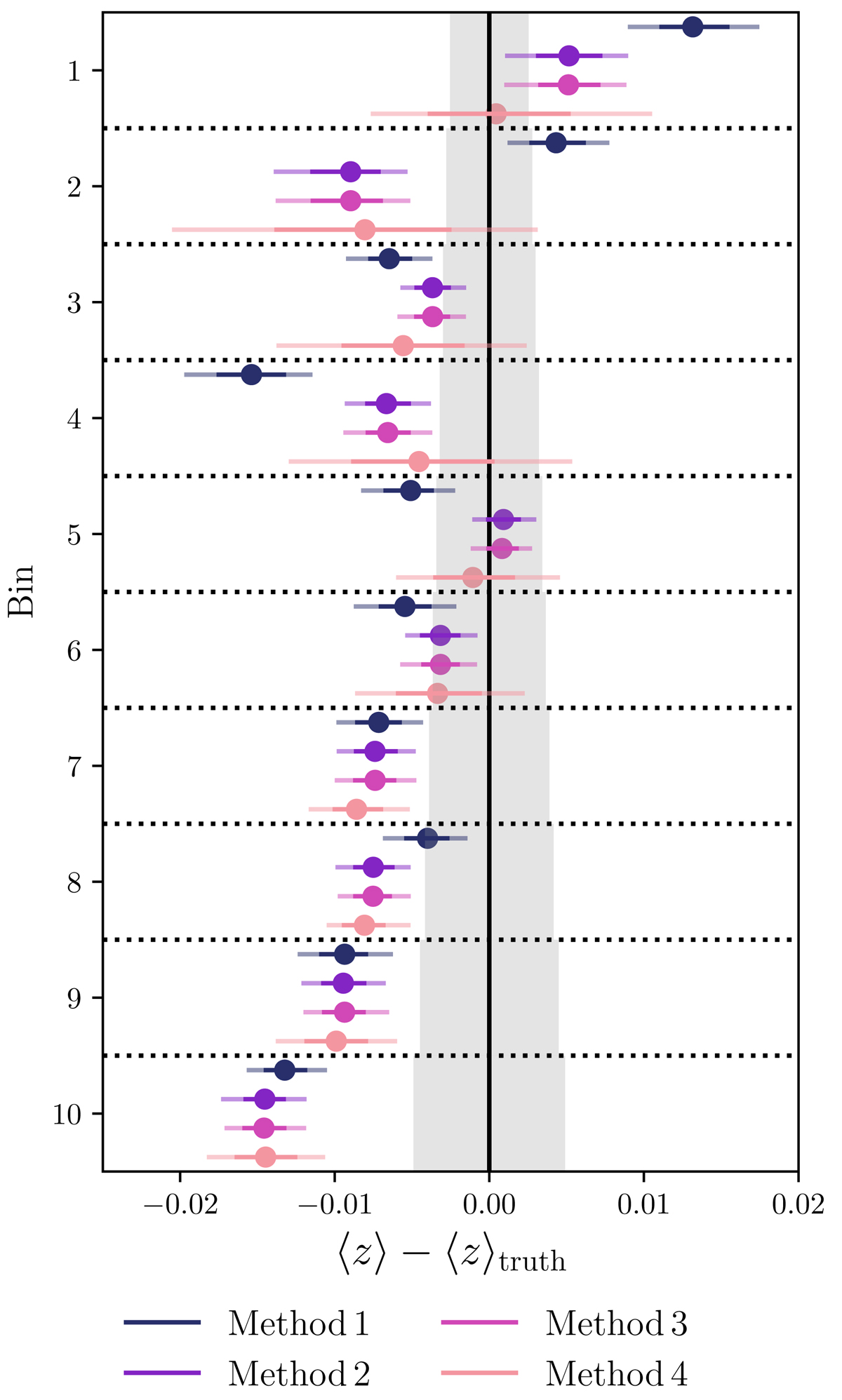Fig. 7.

Download original image
Error on the mean redshift determination, ⟨z⟩−⟨z⟩truth, in ten Euclid tomographic redshift bins, for each of the four galaxy bias correction strategies (Sect. 3.1), compared via the shifted-true model (Sect. 3.3.1). In dark blue is method 1, where no corrections are applied; in purple is method 2, where the spectroscopic galaxy bias is calibrated by spectroscopic auto-correlations; in magenta is method 3, where the photometric galaxy bias is calibrated by a power-law fit to noisy, photo-z-binned photometric auto-correlations; and in light pink is method 4, where the photometric galaxy bias is calibrated using auto-correlations binned by true redshifts (not applicable to real data). Dark and light shades indicate 68.3% and 95.5% confidence intervals. The grey band shows the target uncertainties for Euclid. Method 4 shows that systematic biases in bins 1–6 are caused by incomplete bias corrections, whilst the biases persist for higher-redshift bins, suggesting some other source of systematic error.
Current usage metrics show cumulative count of Article Views (full-text article views including HTML views, PDF and ePub downloads, according to the available data) and Abstracts Views on Vision4Press platform.
Data correspond to usage on the plateform after 2015. The current usage metrics is available 48-96 hours after online publication and is updated daily on week days.
Initial download of the metrics may take a while.


